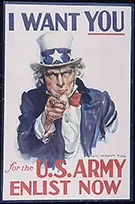The Marshall Plan and Recovery
The Marshall Plan was named after George C. Marshall who had become Secretary of State in February 1947. After the war, Europe was in ruins. The fighting during World War II had caused so much damage. Entire cities had been reduced to rubble, while others had experienced extensive damage. All over Europe, homes and factories had been destroyed, as had roads and bridges.
There were shortages of food and everyday necessities and millions of people were homeless. During the harsh winters of 1945, 1946 and 1947, many people died in their unheated, freezing homes due to fuel shortages. Germany was in a particularly bad state after allied bombing campaigns had destroyed many cities.
Marshall’s biggest fear was the threat of communism from the Soviet Union which had now expanded throughout Europe. His president Harry Truman was also concerned about the spread of communism as he saw it as a system that did not allow its people to be free. In March 1947, Truman told Congress that America had to play an active role in stopping communism. This was called the Truman Doctrine.
In June 1947, Marshall went to Europe to take a closer look at the damage caused by the war. Marshall saw the devastation of the West European countries as a danger because he believed they were open to a takeover by the Soviet Union. In the beginning, Marshall and Truman allocated 17 billion dollars to help the European economy to get back off the ground.


Who took part?
The 16 countries involved in the plan were mainly from Western Europe and included the United Kingdom, France, Germany and Italy, among others. Spain decided to follow its own path to recovery. From the East, Czechoslovakia and Poland applied for Marshall aid, but the Soviets, under Stalin’s leadership, insisted that they stop their applications. An alternative recovery plan was developed in communist Eastern Europe in 1949 called Comecon.

What aid was given?
Marshall Aid was used to buy fuel, basic food provisions, raw materials, goods and loans. A lot of the money was spent on buying American commodities, including machinery which played a big role in getting factories working again.
All countries received billions of dollars. Medicine was in great demand by the worst hit nations. The French bought many tractors, feed and fertiliser to improve the efficiency of their farms, Fishermen were given new nets, weavers were given wool. Various countries improved their transport systems.
The plan not only benefitted Europe. America also gained a lot from the trade involved in the plan as it could provide Europe with a range of goods. It was also able to have a big influence in Europe. Due to the aid, the Europeans were very grateful to America and formed closer political and military connections.

Results
The Marshall Plan finished ahead of time on December the 1st, 1951. Some saw the plan as one of the causes of the Cold War, the long-term divide of the world between East and West.
Overall though, the effect of the Marshall Plan was positive. The factories and farms started working again and the overall output of these European economies rose by between 15 and 20 percent over four years.
There was also a long-term effect of the Marshall Plan in Europe. It helped bring countries, that had once been enemies, together and they worked and traded for common improvement. The cooperation encouraged by the Marshall Plan laid the basis for what would eventually become the European Union (EU). The EU became a very successful union, helping to prevent further wars and encourage free trade.
The plan was seen as such a big success that George Marshall was given the Nobel Prize in 1953, for his creation of the plan.



